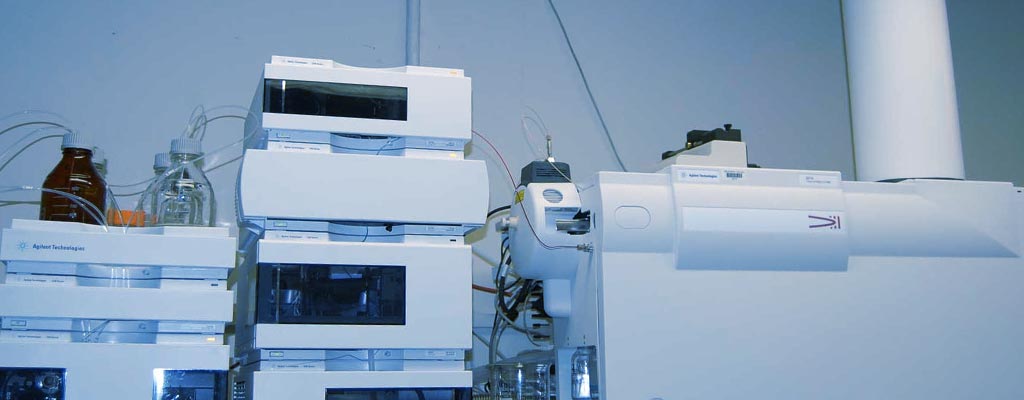Mass spectrometry (MS) is nowadays the standard technique for the recognition, characterization and measurement of elements, compounds and macromolecules.
Mass spectrometry has become invaluable across a broad range of fields and applications, including chemistry, biology, drug-toxicology, proteomics, metabolomics, genetics and any scientific discipline interested in the characterization and measurement of elements and molecules. All valuable national and international universities and research centers stand out for mass spectrometry instrument facilities. Applications of MS to complex mixtures, such as in biomedical sciences and biotechnology, usually contemplate coupling it with molecular separation techniques (e.g. chromatography or electrophoresis) although it is also possible to directly analyze samples without any previous separation.
- Standard HPLC /nano LC/chip with ESI source and Q-TOF analyzer. It is a versatile liquid chromatography system coupled with a modern high resolution time of flight mass spectrometer. It can be applied, alternatively, to analysis of proteins, peptides, drugs, toxic compounds and organic metabolites. The accurate determination of molecular masses allows identification without the need for reference standards. For instrumental configuration it is not suitable for the most modern proteomics.
- ICP-MS system. ICP-MS system with collision cell, Cetac autosampler, chiller, and Chemstation PC workstation. The instrument allows the analysis of inorganic, metallic and non-metallic elements in concentrations up to parts per trillion (ppt), including the possibility of multi-element analysis (up to more than 70 elements per analysis), starting from inorganic or organic matrices of different origins: food (eg meat, flour, wine, oil …), environmental (eg water, soil extracts …) or biological (plant tissues, biological fluids …).
- UltrafleXtreme MALDI-TOF/TOF mass spectrometer. The UltrafleXtreme TOF/TOF mass spectrometry system is designed to work both in linear and reflectron mode, and is capable of performing MS/MS and MALDI-imaging experiments. This instrument is mainly dedicated to the study of high molecular weight proteins and finds applications in the field of clinical proteomics, genomics, metabolomics, lipidomics, and in biomaterials and biopolymers studies. In biotechnological research, and in particular in proteomics, metabolomics and lipidomics studies it is essential to have information on the primary sequence of proteins, for their identification and/or quantification, as well as for the recognition of incorrect amino acids transcription or post-translational errors etc. These information, obtained from experimental data, must be compared with theoretical models or dedicated databases.


